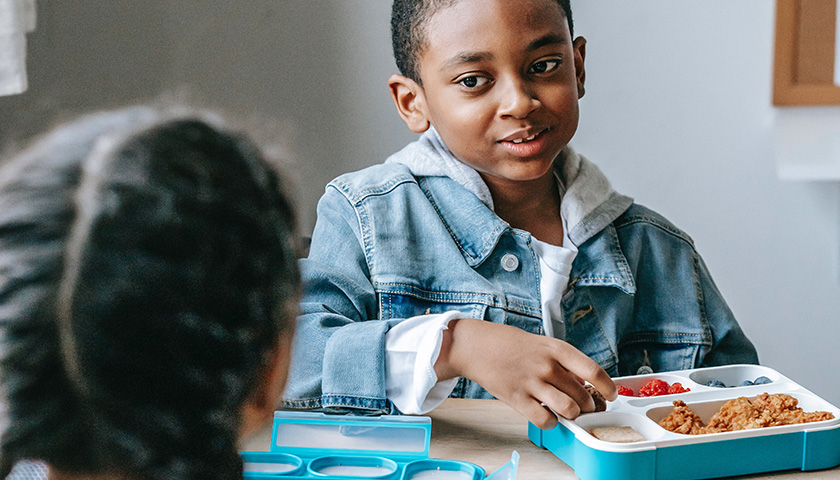by Madeleine Hubbard
At least a dozen states are considering implementing or already have free student meal programs to continue the federal government’s COVID-19 giveaways, while some activists are demanding for more things to be made free.
Congress allowed a pandemic-era free student meal waiver to expire on Sept. 30, returning to the pre-COVID posture where only students at some schools or those whose families met specific income requirements were given free or reduced-price meals.
Picking up where the federal government left off, California and Maine began using budget surpluses to create universal school meal programs, and Minnesota lawmakers hope to do the same this legislative session, Politico reported Saturday.
In the midterm elections, more than 56% of Colorado residents voted to raise taxes on people making more than $300,000 a year to fund free meals for all public school students, according to NPR.
Nevada, Vermont and Massachusetts extended the free student meal programs through the 2022-23 school year, while Pennsylvania extended free breakfast for the year.
Politicians in Washington, Connecticut, Missouri and New Mexico have expressed support for universal student meals, with some planning on proposing bills for the measure next legislative session.
Georgetown University Professor Krista Ruffini told Politico that expanded free meal programs can lead to academic and behavioral benefits for students.
“Math test scores go up, exclusionary discipline — basically out-of-school suspensions — go down and the use of food bank services also falls,” Ruffini said.
The free student meals come as the federal government is spending money on giveaways in other areas.
Last month, the Biden administration began giving away free COVID tests again to Americans as cases are expected to rise due to indoor winter gatherings.
The White House deferred repayment of student loans, again, as the administration pursues court cases for executive student loan forgiveness.
The pause in repayments is expected to cost $40 billion, The Center Square reported in November. If the Biden administration wins, the Congressional Budget Office estimates that student loan forgiveness will cost taxpayers roughly $400 billion.
Meanwhile, state lawmakers are proposing making New York City buses free over the next four years while increasing bus service by raising taxes. The proposal would cost $3.26 billion a year.
Boston, Washington, D.C. and Los Angeles have all announced plans to provide free buses by next summer, The New York Post reported.
“Their proposal is upside down. They should be thinking about how to finance [the bus system], not how to undermine their finances,” transit expert and New York University Professor Mitchell Moss warned.
During an episode of “Just the News, No Noise” in November, Rep. James Comer (R-Ky.) stressed the need for accountability after government spending skyrocketed amid the pandemic.
“In the name of COVID, Congress has lost its mind over the past three years, the trillions of dollars that have been wasted is mind-boggling,” said Comer, who is slated to lead the House Oversight Committee when Republicans are sworn into the majority this week.
“Government’s never going to be the model of efficiency, but we can do better than what we’ve done over the past three years. I mean, the COVID money alone will go down in history as the biggest waste of American taxpayer dollars ever. And we’ve got to get some accountability there,” he said.
Sen. Rand Paul (R-Ky.) exposed more than $482 billion in what he called “wasted taxpayer money” in his 2022 Festivus Report, named after the made-up holiday in the sitcom “Seinfeld.” The careless government spending may be increasing, as Paul’s previous Festivus report found that about $52 billion was wasted in 2021.
The spending comes as the national debt this year hit an all-time high of more than $31 trillion.
– – –
Madeleine Hubbard joined Just the News as a fast file reporter after working as an editor at Breitbart News. Hubbard previously served as the special assistant to the Assistant Secretary of Public Affairs at the U.S. Department of Health and Human Services during the first year of the COVID-19 pandemic.
Photo “Students Having Lunch” by Katerina Holmes.





